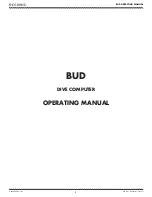
Keysight 85059B Operation and Service Guide 1-3
General Information
Calibration Kit Overview
Calibration Kit Overview
The 85059B 1.0 mm precision calibration kit is used to calibrate your PNA
series network analyzer system. This kit is used for the measurement of
components with 50
Ω
, 1.0 mm connectors with a frequency range of DC to
120 GHz.
Because it is physically impossible to construct a slotless version of the 1.0 mm
female contact, the female devices in this kit use slotted contacts. The slotted
female contact does not have the same electrical characteristics as a solid
conductor, and therefore, the male and female devices in this kit have different
models.
Although the male and female devices are designed to have the same
mechanical length, their electrical delays are different. This reflects the
differences in the connector interface compression. When the male and female
devices are torqued together the male side compresses more than the female
side.
The 1.0 mm connector utilizes an air dielectric interface for the highest
accuracy and repeatability. The coupling diameter and thread size were chosen
to maximize strength, increase durability and provide highly repeatable
connections. The connectors are designed so that the outer conductors
engage before the center conductors.
To obtain the best performance possible, the manufacturing tolerances of the
connectors are tighter than the standard 1.0 mm specifications per the IEEE
287 precision connector standard.
Kit Contents
Use the Contents List in the shipping container to verify the completeness of
your shipment. Although this list is the most accurate, you can also use the
illustration in
to verify the items in your shipment. If
your shipment is not complete, contact Keysight Technologies - refer to
“Contacting Keysight” on page 5-4
.
Compatible Network Analyzers
The devices in this kit and their data are compatible with the PNA series
network analyzers.
Data-Based Model for Defining the Calibration Standards
The 85059 family of calibration kits uses the Data-Based models to define the
calibration standards.










































